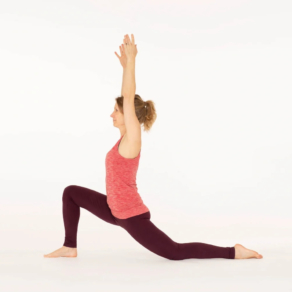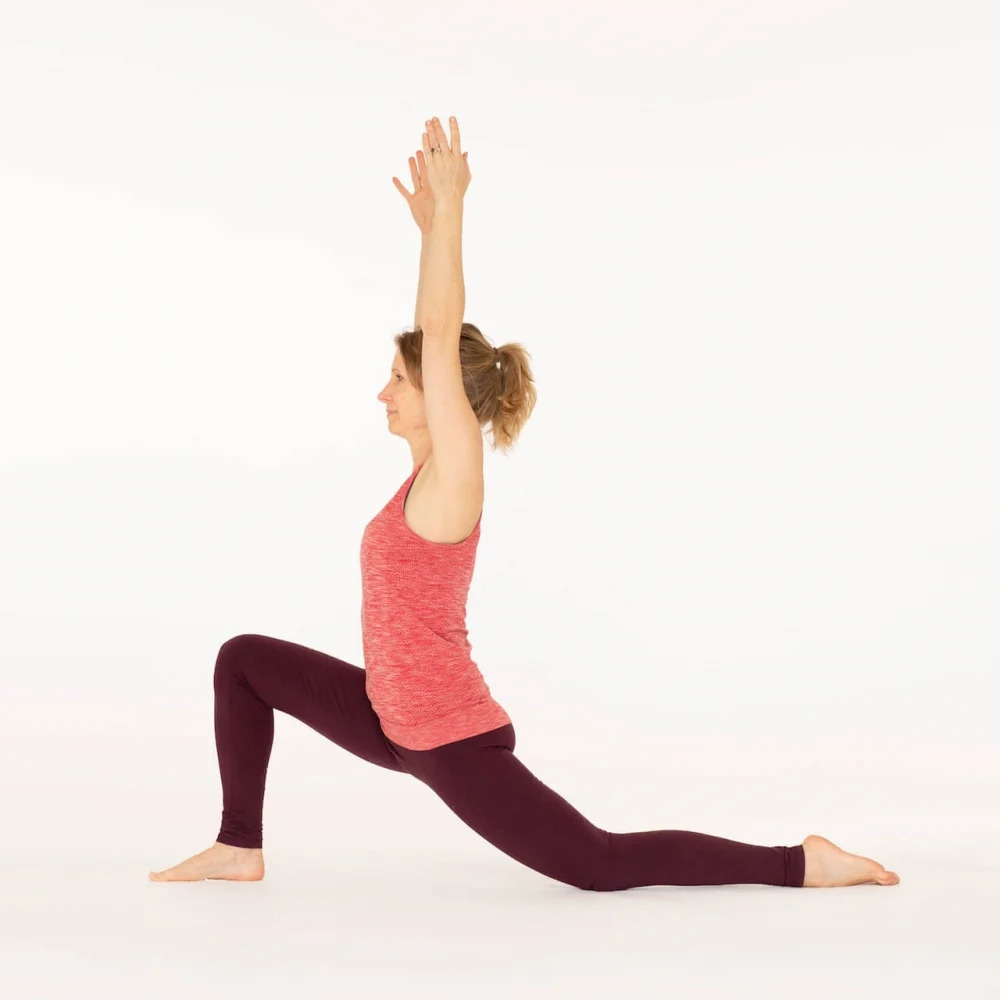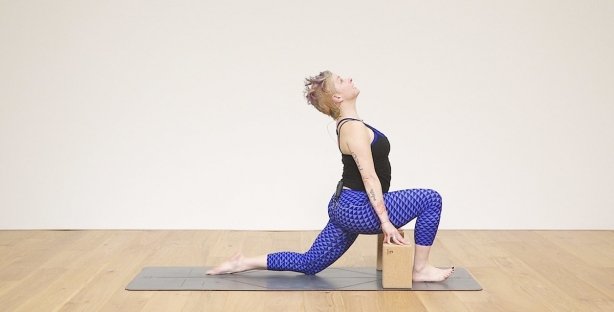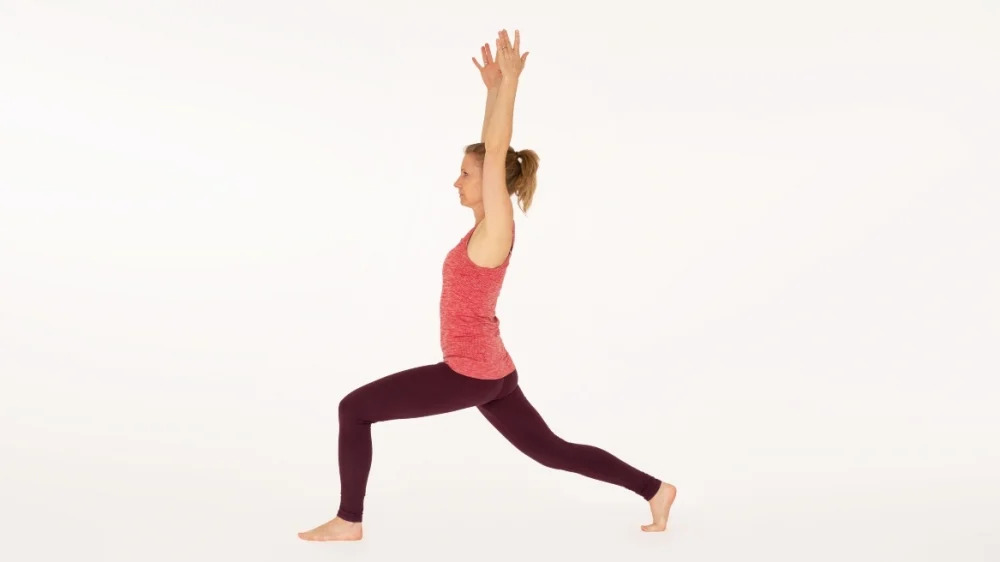Step by step
- Start in Adho Mukha Svanasana / Downward Facing Dog.
- As you exhale, step your right foot forward, between your hands. Lower your left knee to the floor, sliding the foot back until you feel a nice stretch in the left hip and thigh.
- Keep the hips low and level with each other.
- As you inhale, engage your lower belly and lift your chest away from the thigh, sweeping the arms up alongside your ears.
- Look straight ahead or come into a gentle backbend with your gaze to your thumbs.
- As you exhale, lower your hands back down and step back to Downward Facing Dog.
Beginners’ tips
- You can keep your hands on the floor, blocks or your hips and work on the stretch in the front thigh.
- Energetically ‘scissor’ (draw) your hips together to create more stability.
- Use a folded blanket to pad your back knee.
- Read Esther Ekhart’s advice about how to step forward into Lunge from Downward Dog.
Benefits
- Strengthens the back, legs and shoulders.
- Stretches the hips, thighs and feet.
- Improves balance and focus.
Watch out for
- Make sure your front knee is tracking in the same direction as your toes.
- The knee can come slightly forward of the foot in low lunge because the back knee is on the mat taking some of the weight. However, if you have any knee problems, keep it stacked over the ankle.
- Engage your core and lengthen your tailbone to ensure you’re stabilising the lower back.
Variations
- Clasp your hands behind you or place your hands on the lower back with the fingers facing up towards the waist for a chest opening variation.
- Try twisting in low lunge: Lengthen your spine as your inhale. Place your palms together in Anjali Mudra (prayer position) and hook your left elbow on or outside your right knee as you exhale. Keep lengthening your spine with each inhalation. Repeat on the other side.
- Try bending your back leg and taking hold of your ankle with your left or right hand (both variations possible) to feel a deeper stretch in your thigh muscles and shoulder.





